- Where?
- Horse Guards, Whitehall, Westminster
- Time required?
- A typical visit is 15-20 mins
- Parking:
- Nearby car parks
- Buses:
- 3, 11, 12, 24, 53, 87, 88, 159
- Bus fares
- Trains:
- The closest station is Westminster Circle District Jubilee
- Other nearby stations: Charing Cross and Embankment
- Train fares
If you walk down Whitehall between 10 AM and 4 PM the pavement will be heaving with people taking selfies by the sentry boxes. (After 4 PM the horses disappear and you get two Foot Guards instead. At 7 PM they’ll shut the gate and a solitary Foot Guard will be out of sight inside. At 7 AM they’ll re-open the gate and the horses will return at 10 AM.)
Horseboxes for the Household Cavalry on Whitehall
Everyone wants a photo of themselves standing next to a horse and when you’re waiting on the pavement it probably seems easy enough to get, but this is a big crowd. And you won’t appreciate quite how big it is until you turn around and find yourself facing fifty people all clutching their cameras like a rank of paparazzi. And behind them will be another row of curious tourists all peering down from the top deck of the passing buses at the gun cops on the gate and your wife and kids urging you to “stand closer, stand closer so you’re in the photo!”
 Photo: Craig Cross
Photo: Craig CrossThe standard manoeuvre seems to be to send the dads up first whilst the mums stand a safe distance away with the kids and the camera. They do this in order to make sure it’s safe (if dad gets kicked by the horse then it doesn’t matter – it will make a good photo). But he doesn’t want to keep the crowd waiting so he’ll put on a quick grin and a goofy salute and he’s outta there.
Horse Guards building and small courtyard
 Photo: Craig Cross
Photo: Craig CrossIf you travelled back in time 350 years then the building would look pretty similar to today because this is where Charles II built a barracks for the Household Cavalry. His original one is long gone but it had the same central clock tower with two wings around a courtyard and a couple of sentry boxes outside his private garden (where St. James’s Park is today).
When Whitehall Palace burned down in 1698 William III moved his court a short distance down the Mall to St. James’s and the sentries started guarding entry to that instead. Then Queen Victoria moved her brood into Buckingham Palace so it became the approach to both palaces and that’s what Horse Guards is all about now – those horses aren’t there for your photos. They’re serving soldiers from the Queen’s Life Guard protecting the ceremonial approach to two Royal palaces.
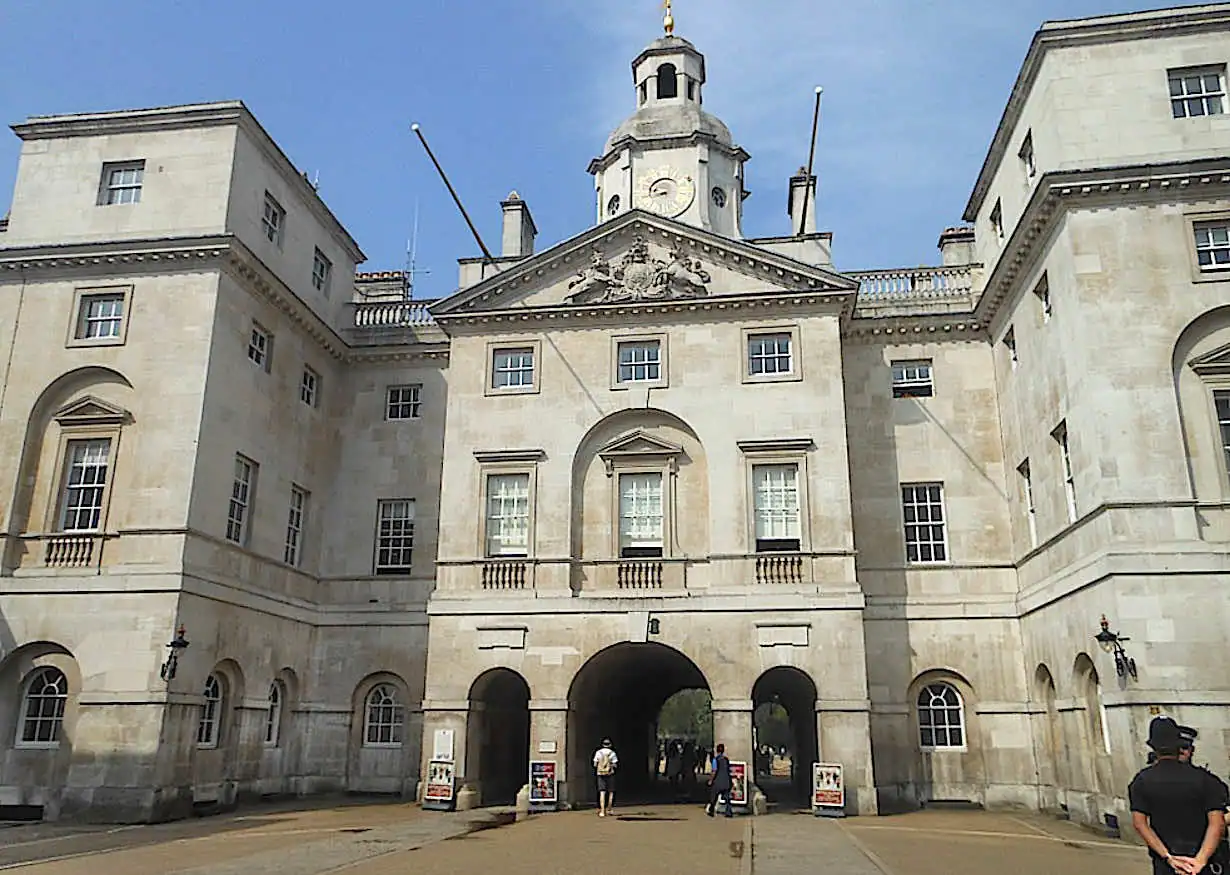 Photo: Craig Cross
Photo: Craig CrossWhen George II commissioned the present building in 1745 the army managed to shunt the cavalry into the northern wing and took over the central section for use as their headquarters all the way through the Napoleonic Wars.
Horse Guards military parade ground
The most famous part of Horse Guards is through that central arch… have a walk through there and you’ll find yourself standing in the parade ground where they do Trooping the Colour and Beating Retreat.
 Photo: Craig Cross
Photo: Craig CrossOld Tudor maps of Whitehall Palace show that this was once the site of the tiltyard where Henry VIII held his jousting tournaments and the long wooden tilt (the central fence that separated the two jousting knights) ran roughly across the middle.
So this is where you need to fire up your imagination a little bit – if there are a couple of tourists riding their Boris bikes across it then fantastic, that will make it easier – picture one of them starting his run up from the Admiralty end whilst the other comes charging in from the Downing Street side, and when they crash in the middle they’ll be clashing in the same spot where chivalrous knights did all those centuries ago.
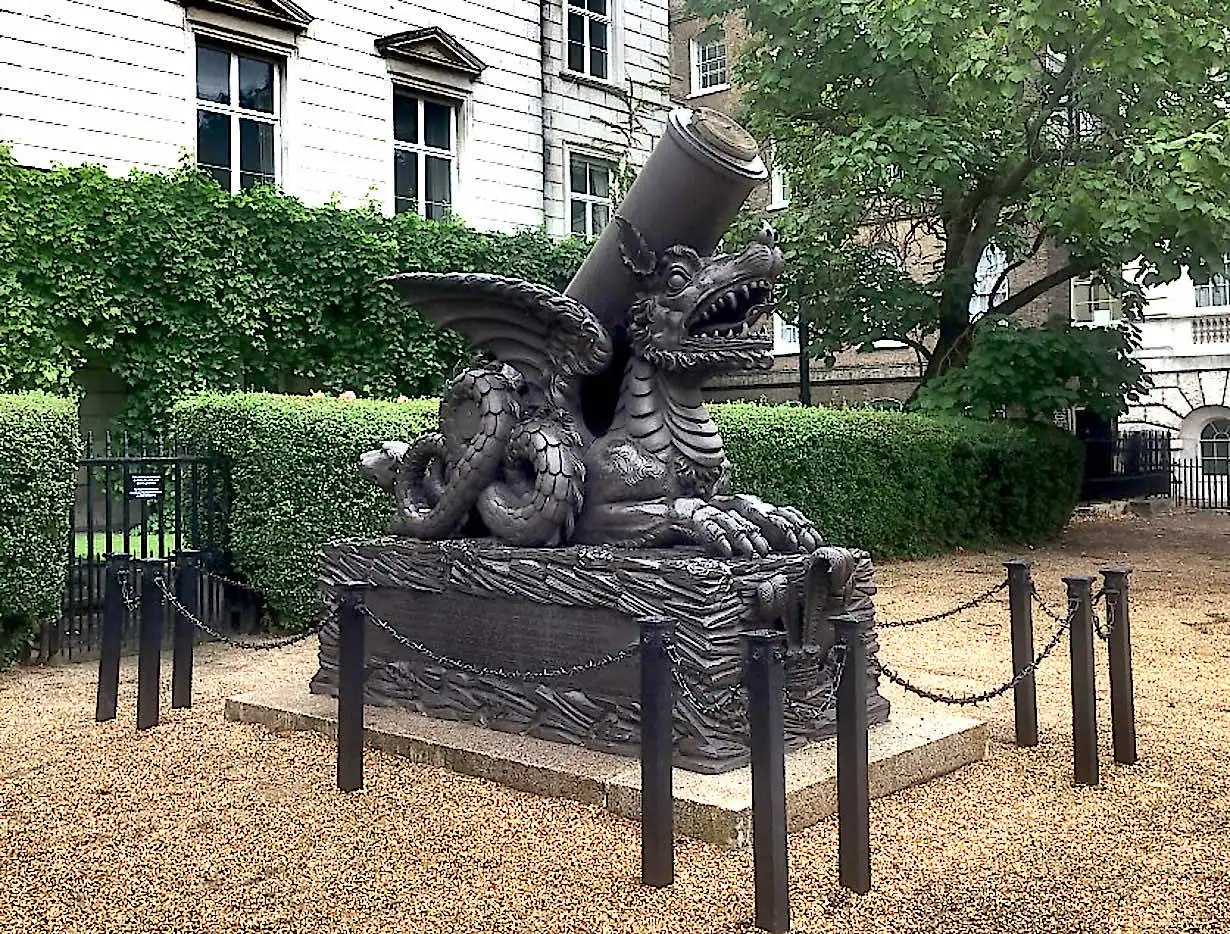 Photo: Craig Cross
Photo: Craig CrossThere are a couple of military souvenirs worth finding around the edge – on the left is a 500-year-old Turkish cannon that we managed to capture from the French in 1801 and over the other side is a mortar that we grabbed at the Spanish siege of Cadiz in 1812.
Admiralty Citadel – Operations centre during World War II
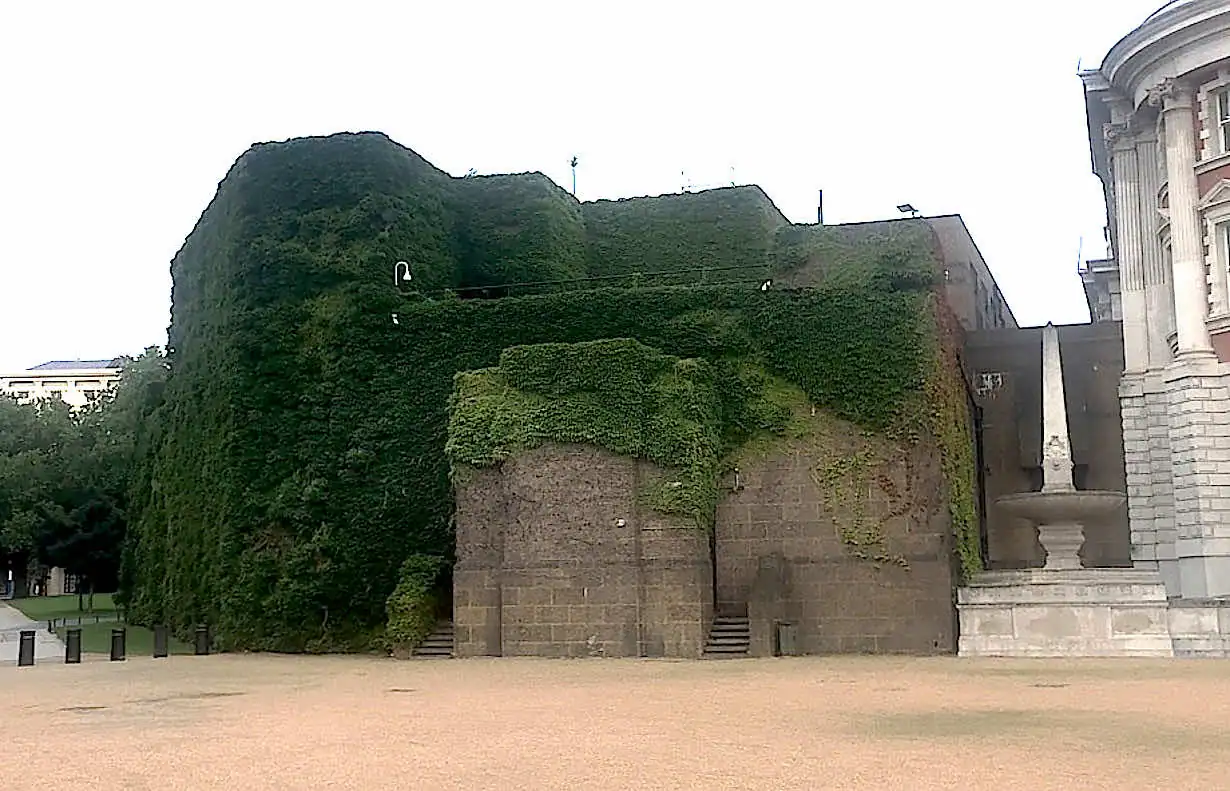 Photo: Craig Cross
Photo: Craig CrossThat ugly ivy covered building on the far left was hurriedly built during the Second World War as a bombproof operations centre for the navy. Its concrete roof is supposed to be 20-foot thick and if you look at the top righthand corner then you can see a couple of holes where the soldiers would have positioned their machine guns had the Germans managed to parachute into Horse Guards.
Admiralty Building – First Lord of the Admiralty’s old residence
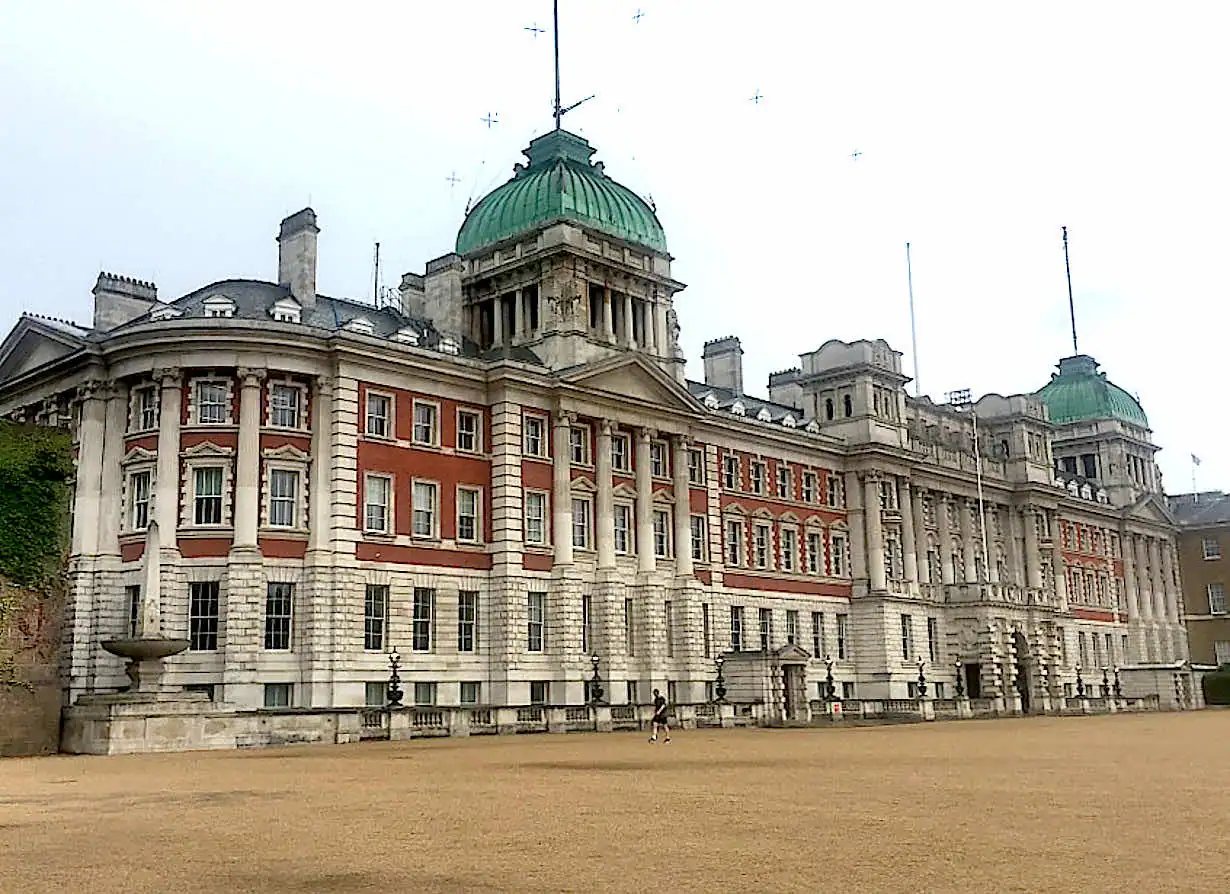 Photo: Craig Cross
Photo: Craig CrossNext-door is the much more impressive-looking Admiralty Building. These days it’s just a load of government function rooms and ministerial flats but from the 1780s right up until 1964 it served as the official residence of the First Lord of the Admiralty. It’s most famous resident was Winston Churchill who slept here during his two stints in World War I and II. When he became Prime Minister he had to swap it for the pokey little house across the other side of the parade ground – No.10 Downing Street.
Household Cavalry Museum & Barracks
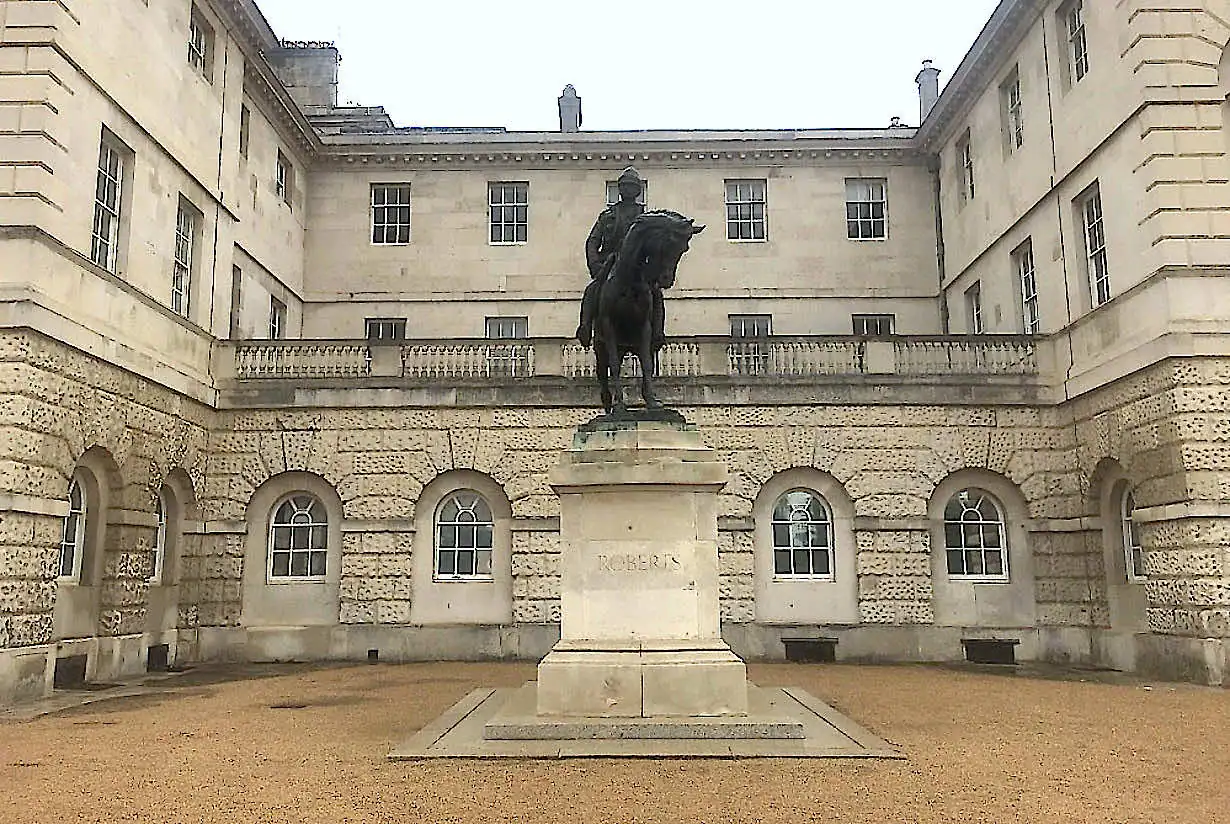 Photo: Craig Cross
Photo: Craig CrossAfter that is the old Household Cavalry barracks which now houses seventeen horses and a museum. (Many tourists are surprised to find a working stable just five hundred feet from Downing Street, but if you enter the museum then you can see them being groomed through a plate glass window.)
The next building after the clock tower is Dover House (the Scotland Office), and the white one round the corner is part of the old Treasury Building, which now houses the Cabinet Office.
Brick wall in front of No.10 Downing Street’s garden
It starts to get a lot more interesting when you reach that brown brick wall, because over the other side of that is the Rose Garden of No.10 Downing Street.
 Photo: Craig Cross
Photo: Craig CrossThe main part of No.10 is hidden completely out of sight behind that brown brick building at the front, and the black backs of Nos 11 and 12 will probably be obscured by leafy trees, but if you can see the windows on the top floor of that brick building then you’ll be looking at a couple of drawing rooms and the Prime Minister’s old bedroom on the righthand corner. The Prime Minister’s present bedroom is supposed to be the one next-door to that, on the side that faces Mountbatten Green.
I don’t recommend going anywhere near that brick wall because it’s guarded night and day by gun-toting cops. Don’t try and point your selfie-stick over the top, for example, because those serious-looking policemen will have you on the floor in five seconds.
If you enjoy this then try Downing Street (you can walk it in less than 3 mins) and Parliament Square (you can walk it in 6 mins). You might like to read my review of the two parades: the Dismounting Ceremony and Changing the Guard at Horse Guards. The Household Cavalry Museum is worth a visit, and the Churchill War Rooms is only two minutes round the corner
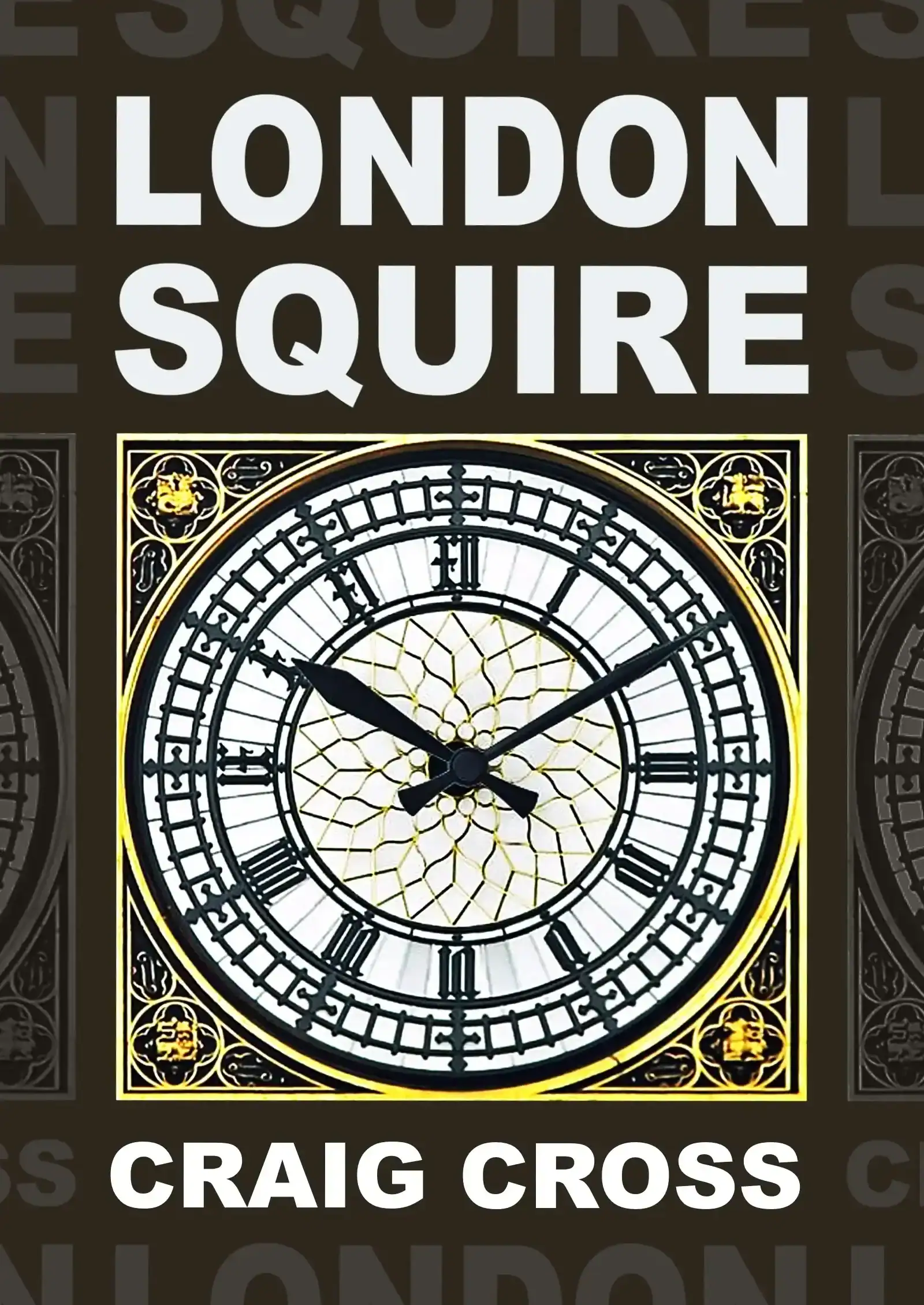 The author Craig Cross owns city-guide.london and has spent the last decade reviewing the capital’s landmarks, attractions and hotels. His guidebook London Squire is available from Amazon. This review was updated on
The author Craig Cross owns city-guide.london and has spent the last decade reviewing the capital’s landmarks, attractions and hotels. His guidebook London Squire is available from Amazon. This review was updated on
Related articles and events
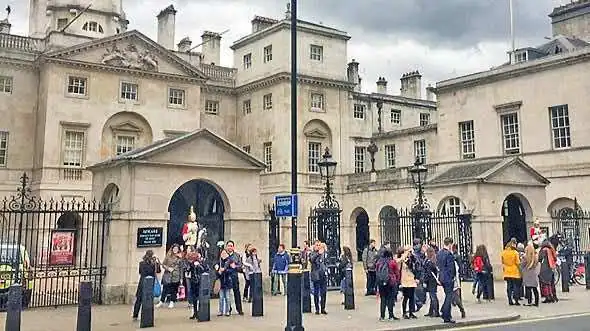
Dismounting Ceremony (4 O’Clock Parade) Horse Guards A daily ceremony of Foot Guards and cavalry that takes place in the courtyard at Horse Guards7
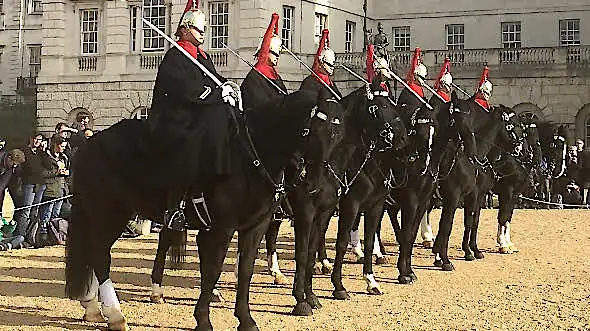
Changing the Guard ceremony at Horse Guards Parade Changing the Guard at Horse Guards is similar to Buckingham Palace but a lot less crowded4
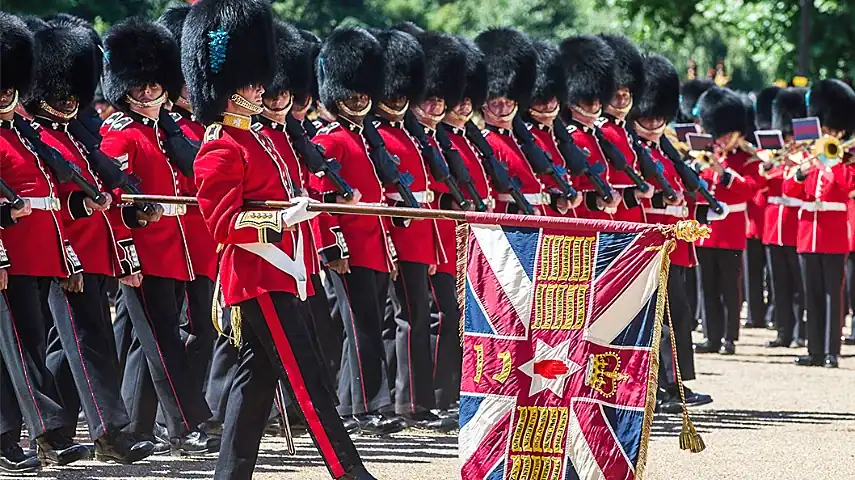
Major General’s Review (Trooping the Colour rehearsal) Two weeks before Trooping the Colour takes place they hold a full rehearsal called the Major General's Review
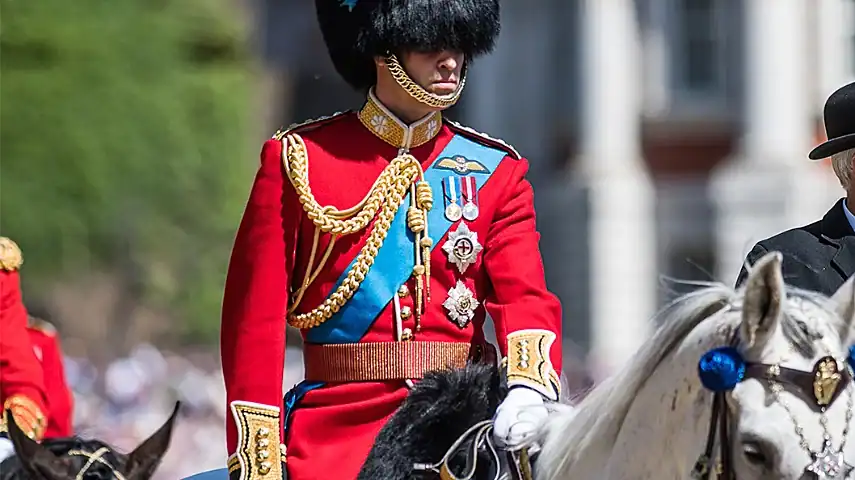
The Colonel’s Review (Trooping the Colour rehearsal) One week before Trooping the Colour they hold a second rehearsal called the Colonel's Review on Horse Guards Parade4
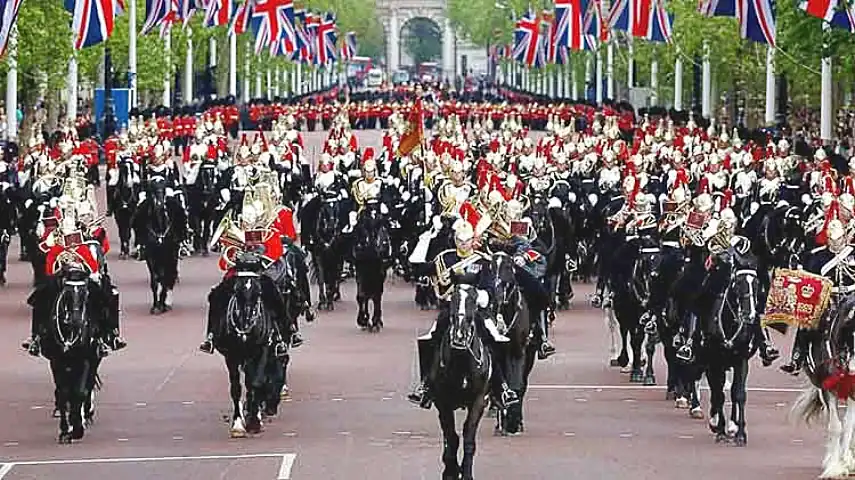
Trooping the Colour at Horse Guards with RAF flypast Parade between Buckingham Palace and Horse Guards followed by an RAF flypast6
Your comments and questions
Helen Can you tell me the best way to get from Horse Guards to Buckingham Palace and about how long it will take
Craig You just walk through the central arch, across the parade ground, and carry on in a straight line through St James's Park (or follow the road round to the right and then turn left down the Mall). It's not far, about 10-15 minutes. The nicest walk is along the northern edge of the lake in the park. If you walk to the middle of the central bridge then you will get a great view of the palace as well.
MP How often do the horses and soldiers change at Horse Guards? What times is it?
Craig Hi MP. The Changing the Guard ceremony takes place every day at 11 AM (10 AM on Sundays). Its quite a complicated ceremony because it takes place in two locations at once, so check out my review to see the best place to stand - city-guide.london/events/?p=15787 - after that there's another daily ceremony at 4 PM called the Dismounting Ceremony, when the horses leaves the boxes and go back inside the stables - city-guide.london/events/?p=18009
PWood What happens if you get too close to one of the soldiers, or you put your hand on his shoulder to take a selfie, would you get arrested?
Craig Hi PWood. I certainly wouldn't recommend doing that. Those guys are real soldiers and will react to any threat. He'll shout at you first (extremely loudly), which is enough to make most people jump back ten feet. After that he will present his arms at you. After that I wouldn't like to know what happens... but I'm sure the armed police in the courtyard will intervene as well.
Sandra olinski How many horse guards are there on duty daily and do they sleep there
Craig Hi Sandra. I don’t know how many soldiers they rotate throughout the day in total, but depending on what time you get there you might see two cavalrymen on Whitehall, two Foot Guards on either side of the courtyard, one inside the arch, or one by the front gate. their movements are described here - city-guide.london/events/?p=15787 The soldiers live at Hyde Park Barracks and Wellington Barracks (by St James Park)